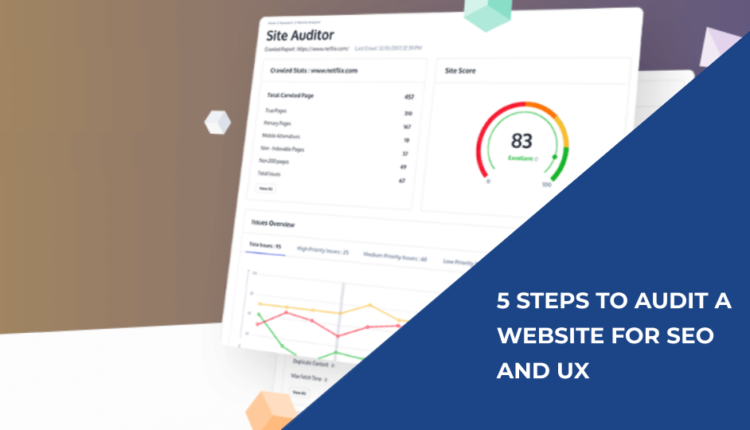5 Steps To Auditing A Website For SEO and UX
Grow your ranking by auditing your website for SEO and UX
Is your website struggling to attract and retain visitors? You are not alone. This is a common problem that millions of online businesses face especially during their early days.
The good news is you can improve this area quite easily even if you know very little about the technical side of running a site.
Website auditing provides an effective solution for most SEO and user experience (UX) issues. It entails carefully examining a site’s behavior, capacity, value, and other building blocks. This way, you’re able to find factors that hinder optimal customer conversions, organic search rankings, and overall growth.
Here, we share five simple steps to auditing a website when looking to enhance SEO and UX.
1. Examine the design
How does your website look and behave when users are interacting with it? A few key areas to check here are the font style, colors, theme, and other interface elements.
It’s also important to realize that not all your web elements and content improve your website. Examples of additions that can damage even the best designs include:
- Too many intrusive pop-ups and ads
- Unreadable text
- Unclear calls to action
2. Assess the navigation

Source: Photo by Amélie Mourichon
How easy is it for visitors to move around and find stuff on your website? The ability to navigate a site with ease is what most users want if they’re to stick around longer and discover its value.
Ask yourself these questions during the assessment:
- Does your current navigation style allow visitors to find your important pages?
- Are there clutters (like too many ads) that are hindering fluid site navigation?
- Can your readers find help quickly when faced with difficulties during navigation?
To answer some of these questions accurately, you might need to implement tools such as heat map analyzers. I also find WriteMaps – a nifty site mapper – very useful when trying to improve website architecture and flow.
3. Investigate site friendliness

Source: Photo by Myriam Jessier
Nearly half of all web browsers today access the internet using mobile devices. What this means is you need to take good care of this user segment to thrive in your online business.
Start by investigating whether your site’s theme and other core elements are mobile-friendly or not.
You can implement a free audit tool such as Google Analytics to discover the different types of devices visitors are using to browse your website.
You can then optimize it to accommodate these users by providing them with the best possible experience.
4. Mind the security
Let’s face it; no one wants their sensitive personal information falling into the wrong hands. If your site collects this kind of data, the noble thing to do is to implement tight security protocols and host it on a secure server.
At the basic, have an active SSL certificate (HTTPS) to minimize chances of data interception/theft. Also, a trusted hosting provider goes a long way in thwarting and quickly resolving security breaches.
5. Test load speeds
Everyone seems to be in a rush in the fast-paced world of today. As such, the last thing they want is to wait forever for your website to load.
Recent studies show that most visitors will abandon your website if it takes more than three seconds to load. You don’t have to be part of these statistics!
Start by testing how quick or slow your current speed is. PageSpeed Insights which is a free tool by Google is a great place to stat. Just paste the URL of a page or website that you want to test and the tool will return your speed score and suggestions on what to improve.
Website auditing doesn’t have to be technical!
If you can follow the five website auditing steps in this post, you should be one step closer to improving your user experience and optimizing your content for search engines.

Comments are closed.